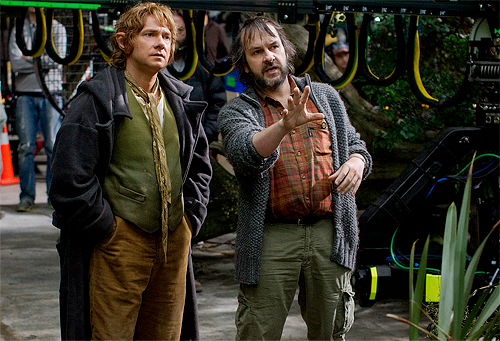 If the technology is cutting-edge, you can bet that Peter Jackson has used it in some form for his film making. The Lord of the Rings was hailed as a ground breaking film for the fantasy genre. It utilized various motion capture technologies and top of the line CGI and prosthetic effects. Jackson’s Hobbit trilogy is no exception. Not only was it filmed in 3D, but Peter Jackson also decided to film it in 48 frames per second, making The Hobbit the first major studio film to be made with the technology.
If the technology is cutting-edge, you can bet that Peter Jackson has used it in some form for his film making. The Lord of the Rings was hailed as a ground breaking film for the fantasy genre. It utilized various motion capture technologies and top of the line CGI and prosthetic effects. Jackson’s Hobbit trilogy is no exception. Not only was it filmed in 3D, but Peter Jackson also decided to film it in 48 frames per second, making The Hobbit the first major studio film to be made with the technology.
Keeping up with Jackson’s tradition of only the best, RealD Inc. announced on January 9, that the company’s new RealD TrueImage 2D and 3D image enhancement technology was used in post-production of The Hobbit:The Desolation of Smaug. Use of RealD TrueImage provides higher quality and more detailed footage. Peter Jackson said, “As soon as I saw a demonstration of [the technology] I wanted to use it on The Hobbit: The Desolation of Smaug.”
According the Jackson, the RealD TrueImage eliminates digital noise and other artifacts, meaning various low-light shots that he had struggled with the quality of were made completely clean. “By cleaning up noise we were suddenly free to really push the dynamic range and get extraordinary detail,” Jackson said.
For use in both production and post-production environments, RealD TrueImage works by calculating millions of data points per pixel to correct artifacts (structures or appearances that are not meant to be on the film) and reconstructs an image to be a more accurate and lifelike reflection of a filmmaker’s original intent. This provides an overall higher resolution and adds back detail that may have been lost during capture or production. According to Peter Jackson, the cleaner image helps viewers making for “a much more comfortable 3D experience because your left and right eyes are not being asked to process separate levels of artifacts.”
RealD TrueImage was first launched for use in the professional market, however, the technology is expected to make its way to consumer use in applications such as increased image quality and lower file sizes for content streaming due to more efficient data compression.
It is always amazing to see what new technologies are advancing within cinema. I recall when I saw The Lord of the Rings for the first time; everything looked so realistic that I couldn’t imagine how film making and special effects could possibly improve. However, with each new blockbuster hit, new changes and new advances come forth making my viewing experience even more immersive than the last. I wonder what the third installment of The Hobbit trilogy will have in store for us. I’m sure Peter Jackson will have something up his sleeve and I can’t wait to see it for myself!


